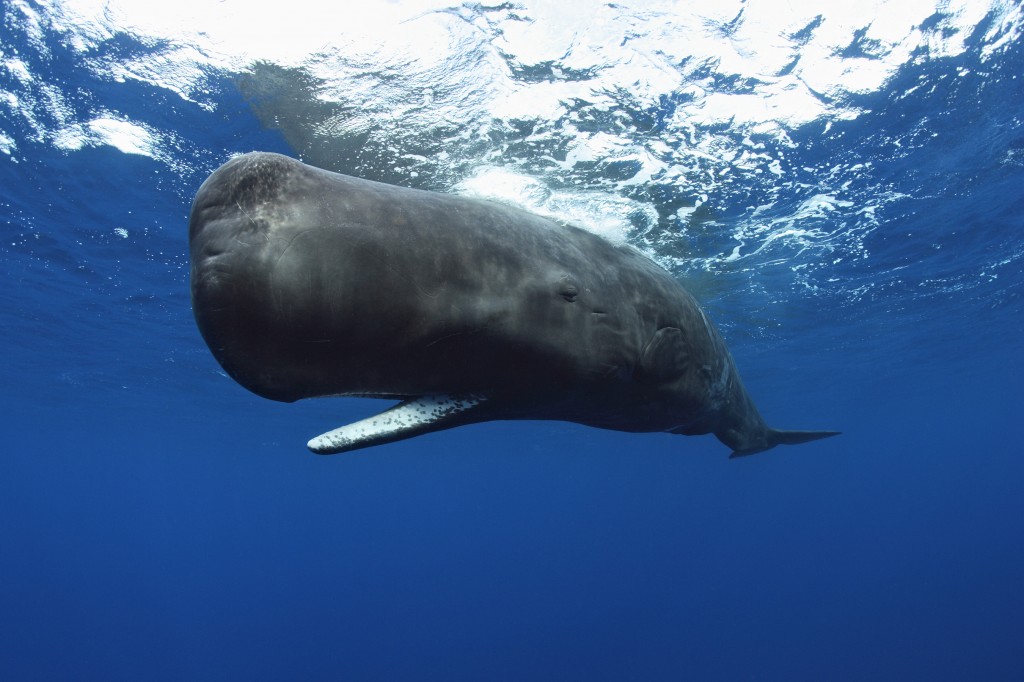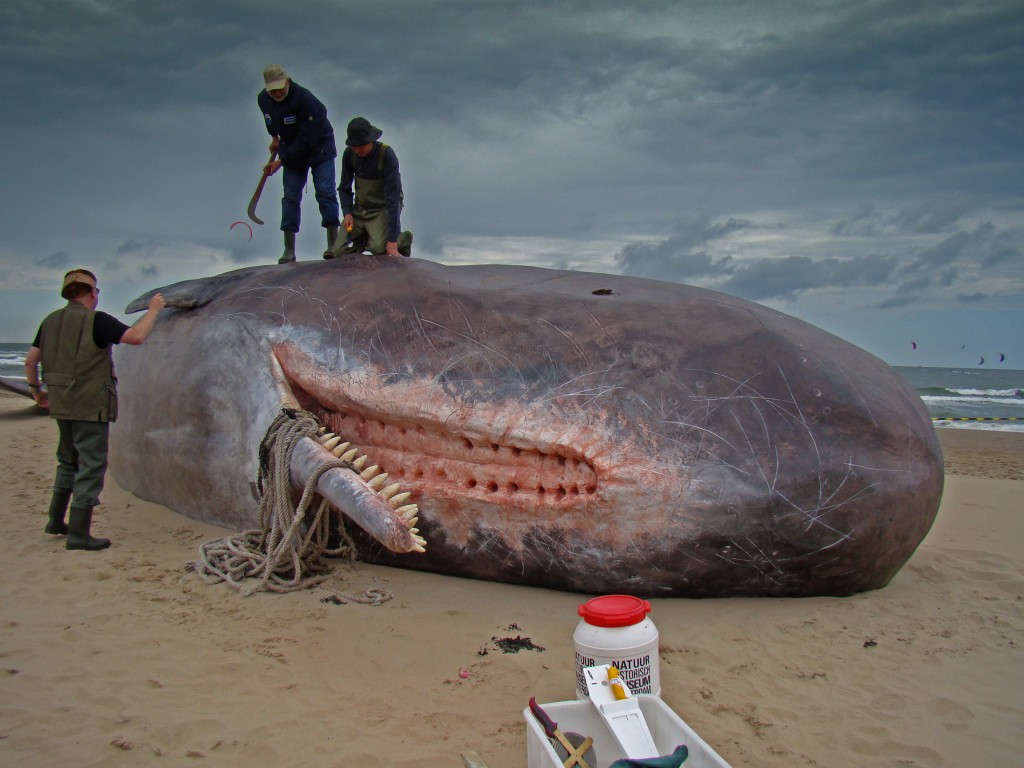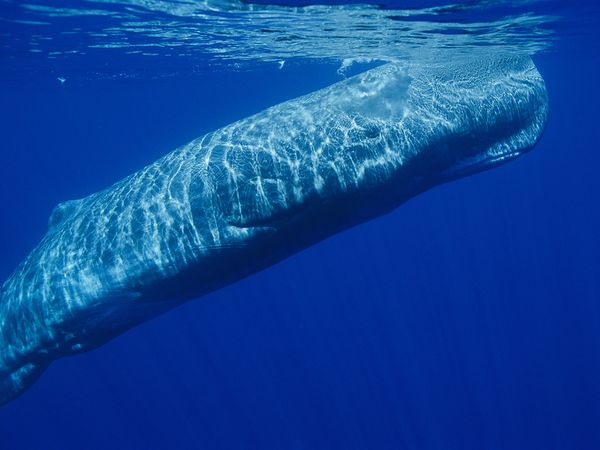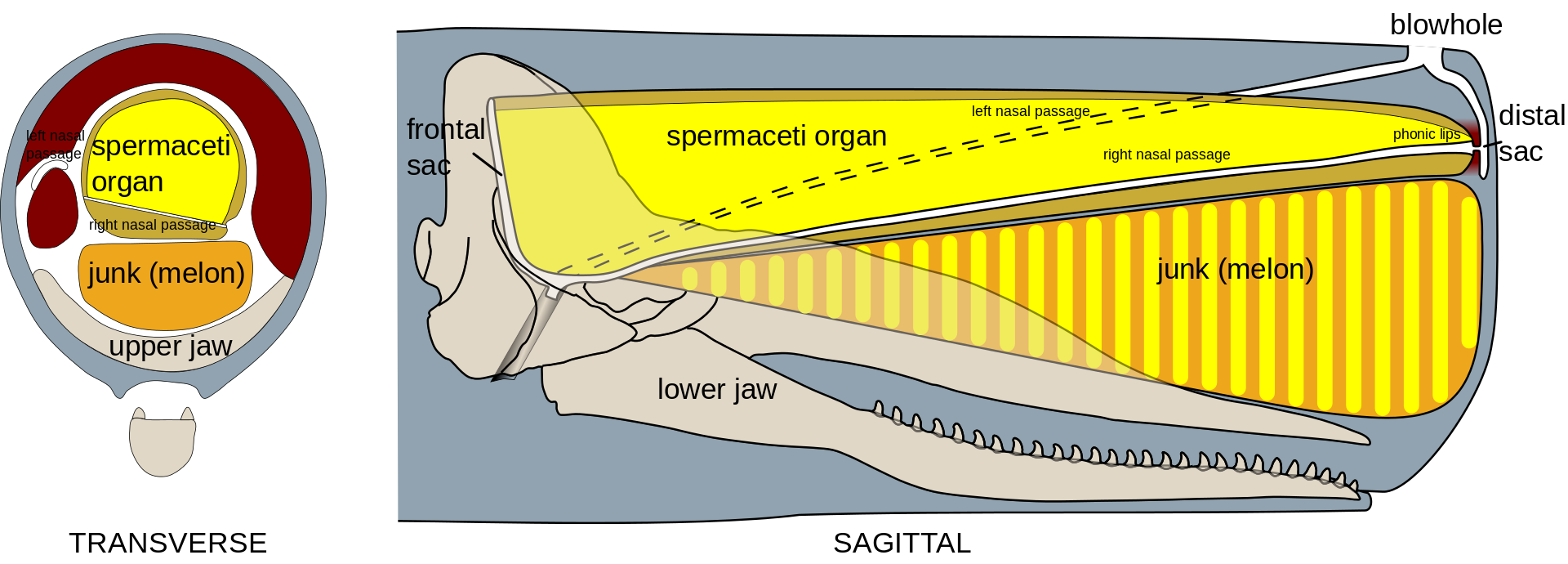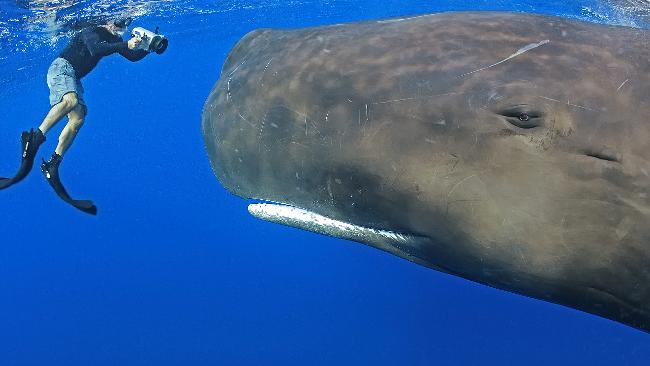Sperm Whale: The Loudest & Largest Toothed Predator
Despite being very poorly studied, the sperm whale (Physeter macrocephalus) has one of the most publicly recognised forms of all the whale family. This fame is, in part, due to Melville’s haunting Moby Dick the most famous of all the sperm whales. The sperm whale’s position as the largest toothed predator has probably added to the behemoth’s fame. We all love superlatives after all.
Most of what we’ve learned of the sperm whale has been gleamed from their corpses; anatomy, however, is only ever part of the puzzle of life.
The liquid fat “spermaceti” that’s found in their huge heads made them a sought after commodity from the early 18th to the late 20th century. Just one sperm whale head can hold almost 2000 litres of the sticky stuff. The sperm whale has the largest braincase of all animals, and the biggest brains to boot, weighing in at 8 Kg (about the weight of 16 cans of beer compared to human’s measly 3 can weight).
What’s it thinking about? Although brain size doesn’t correlate perfectly with intelligence, cetaceans are renowned for their bright spark so we can assume there’s a lot more going on than the sperm whale’s corpse can tell us.
One of the biggest, and now partially solved mystery of the sperm whale is their diet. The whales dive very deeply, we don’t know exactly how long and how deep, but we know they can manage at least a couple of kilometres south of the surface and an hour’s dive is no problem at all.
From our sperm whale corpses we know that the whales eat most living stuff they come across in the depths, squid, sharks, fish, jellyfish, anything really. We also know that they battle with giant squid thanks to the sucker shaped scars left on their washed up bodies. So they’re not afraid of a fight.
As mentioned, sperm whales do have teeth, but their mouth is comparatively tiny and many of the prey items found in their stomachs don’t have bite marks, they’re just swallowed whole. The real mystery, however, is how a multi-tonne, 20 metre long beast can catch a nimble squid or a nippy shark? Whales are graceful and swift, but they are no match for a jet propelled Humboldt squid. How are they catching such immaculately designed, submarine sports cars?
The clue may well lie in their massive bonce. Inside their cranium lies their brain, of course, but also a huge organ called a melon. The melon’s structure is a complex mix of liquid and semi-liquid fats alongside labyrinthine pipes and tubes. It is known that, like with many other cetaceans, ultrasound is utilised. In the same way that bats can find their prey by firing sound waves, so can many whales and dolphins. The melon is thought to help focus the beams of sound onto the target.
This focusing of sound is essential, if the sound isn’t in a precise beam the echo they receive will be a mess and they won’t be able to locate their prey, like trying to trace the echo of a clap when stood in a tunnel. It comes from everywhere.
Scientists now believe that the sperm whale doesn’t just use the melon for navigation and prey searching, it seems that the sound waves might be used as a weapon. A sound wave of sufficient energy could be enough to stun a prey item making a chase unnecessary.
There is some evidence that sperm whales can produce pretty potent sounds. An unfortunate sperm whale found itself stranded in a bay, the youngster was a draw for marine biologists who were astounded by the power of its vocalisations. Researchers put their hand on the whale’s head as it yelped in distress and reported that the power of the sounds was such that it caused their hands to be flung from their position on the front of its dome.
The sound produced by a sperm whale can reach over 230 dB (which equates to 170 dB in air), louder than anything else in the animal kingdom, beating even the jet engine; anyone who’s been to Eastbourne air festival knows you don’t want to be anywhere near the business end of a Harrier jump-jet without ear defenders. The noise of a sperm whale is similar to the sound levels you would experience if a rifle was fired 3 feet from your face.
This sonic onslaught seems like a pretty good answer to the question of how a weighty beast such as a sperm whale could catch and devour the most nimble of prey items, but proof may be a little longer coming. The depths of the oceans keep their cards pretty close to their chest and so far evidence is scarce.
MORE BEASTS OF THE SEA:

